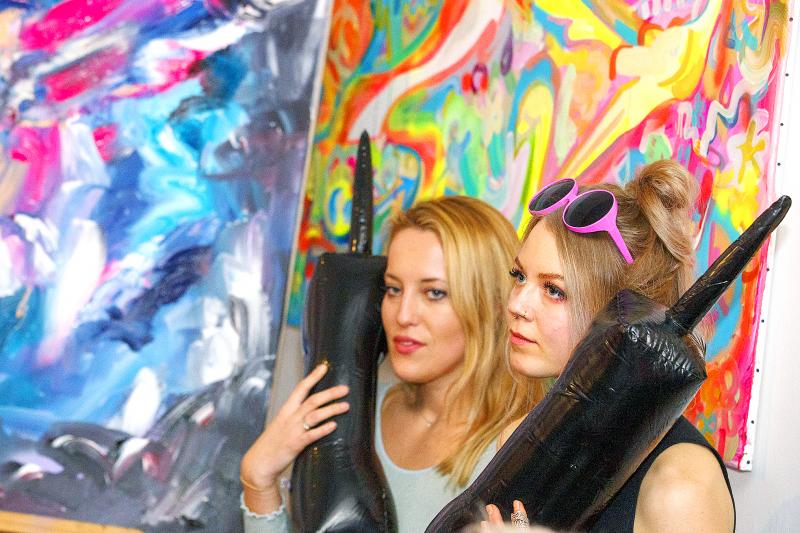‘FUNDAMENTAL PROBLEM’:
Cent, the operator of beta.cent.co, said activity that should not be legal was ‘rampant,’ such as users minting tokens of content they do not own
US platform operator Cent, which sold a non-fungible token (NFT) of former Twitter Inc CEO Jack Dorsey’s first tweet for US$2.9 million, has halted most transactions because people were selling tokens of content that did not belong to them, its founder said, calling this a “fundamental problem” in the fast-growing digital assets market.
NFT sales soared to about US$25 billion last year, leaving many baffled as to why so much money is being spent on items that do not physically exist and which anyone can view online for free.
NFTs are crypto assets that record the ownership of a digital file such as an image, video or text. Anyone can create, or “mint,” an NFT, and ownership of the token does not usually confer ownership of the underlying item.

Photo: Bloomberg
Reports of scams and counterfeits have become commonplace.
Cent executed one of the first known million-dollar NFT sales when it sold Dorsey’s tweet as an NFT in March last year.
However, the platform on Feb. 6 stopped allowing buying and selling, Cent CEO and cofounder Cameron Hejazi told Reuters.
“There’s a spectrum of activity that is happening that basically shouldn’t be happening — like, legally,” Hejazi said.
While Cent’s marketplace, beta.cent.co, has paused NFT sales, the part specifically for selling NFTs of Twitter posts, which it calls “Valuables,” is still active.
Hejazi said there were three main problems: people selling unauthorized copies of other NFTs, people making NFTs of content that does not belong to them, and people selling sets of NFTs that resemble a security.
These issues were “rampant,” with users “minting and minting and minting counterfeit digital assets,” he said.
“It kept happening. We would ban offending accounts, but it was like we’re playing a game of whack-a-mole,” he said. “Every time we would ban one, another one would come up, or three more would come up.”
Such problems might come into greater focus as major brands join the rush toward the so-called “metaverse,” or Web3.
Coca-Cola Co and luxury brand Gucci are among companies to have sold NFTs, while YouTube said it would explore NFT features.
While Cent, with 150,000 users and revenue “in the millions,” is a relatively small NFT platform, Hejazi said the issue of fake and illegal content exists across the industry.
“I think this is a pretty fundamental problem with Web3,” he said.
The biggest NFT marketplace — OpenSea, valued at US$13.3 billion after its latest round of venture funding — last month said that more than 80 percent of the NFTs minted for free on its platform were “plagiarized works, fake collections and spam.”
OpenSea tried limiting the number of NFTs a user could mint for free, but then reversed the decision following a backlash from users, the company wrote on Twitter, adding that it was “working through a number of solutions” to deter “bad actors” while supporting creators.
“It is against our policy to sell NFTs using plagiarized content,” an OpenSea spokesperson said. “We are working around the clock to ship products, add features and refine our processes to meet the moment.”
To many NFT-enthusiasts, the decentralized nature of blockchain technology is appealing, allowing users to create and trade digital assets without a central authority controlling the activity.
However, Hejazi said that his company was keen on protecting content creators and might introduce centralized controls as a short-term measure to reopen the marketplace, before exploring decentralized solutions.
It was after the Dorsey NFT sale that Cent started to get a sense of what was going on in NFT markets, the spokesperson said, adding: “We realized that a lot of it is just money chasing money.”
Comments will be moderated. Keep comments relevant to the article. Remarks containing abusive and obscene language, personal attacks of any kind or promotion will be removed and the user banned. Final decision will be at the discretion of the Taipei Times.




